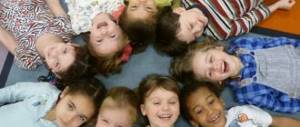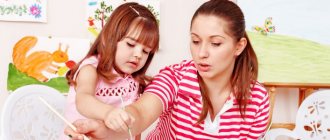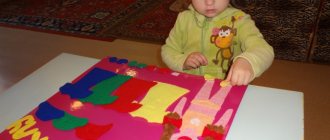Determining the goals of an open lesson
With the successful implementation of the program, which is aimed at developing speech in the preparatory group, the ability to distinguish by ear all the sounds of the native language is improved. The profession of a kindergarten teacher is a very difficult job. The main goal of the teacher is to familiarize children with the world of animals, develop coherent monologue speech, as well as creative activity. By completing easy tasks, the child enriches his vocabulary. In addition, there is a development of thinking, memory, attention, and the birth of imagination.
How to determine the purpose of an open lesson
In order to clarify and activate the speech of preschool children, teachers use specially selected grammar games that contribute to the formation of certain skills. For example, the baby begins to coordinate words correctly.
Integration of educational areas: cognitive development, artistic and aesthetic development, speech development, social and aesthetic development, physical development
Taking into account the integration of educational areas, the child’s diversified development is considered:
- educational;
- speech;
- social and aesthetic;
- physical;
- artistic and aesthetic.
As the child develops cognitively, he or she becomes familiar with the works of great writers. The teacher develops special exercises that are aimed at the ability to distinguish between expressive means.
Note! Speech development is the improvement of phonemic hearing. The baby learns to identify all sounds by ear. When conveying the essence of a story, the child correctly pronounces the words out loud.
The social-aesthetic is aimed at fostering independence, activity, and a culture of communication between one’s peers. A child must know how to behave in a team and help those who need help.
Physical education in kindergarten involves finding extra items. In the process of searching for certain things, children name generalizing words. They also do exercises in dramatizing a fairy tale. Next is finger gymnastics. The goal of this educational area is to develop the need for physical activity and strengthen the muscles of the respiratory system.
The artistic and aesthetic lesson is aimed at developing children's interest in artistic activities. For this purpose, unconventional drawing methods are used.
Vocabulary enrichment
A lesson on speech development in the preparatory group according to the Federal State Educational Standard is classified into three main categories. This may include enriching, clarifying and activating children’s vocabulary.
You can enrich and clarify your vocabulary both with the help of words and with familiarity with the environment. Children who study in older groups have a richer vocabulary. They can freely identify significant differences between their understanding of the world around them and the generally accepted meanings of individual words.
We develop visual and auditory perception, attention, thinking, memory
Preschoolers have difficulty memorizing works of art. Therefore, the teacher must direct the educational process in the right direction. At the first stage, it is advisable to build less complex sentences.
Note! By the age of 2-3, children should already clearly pronounce all the sounds of their native language, develop their hearing, and also discover a new talent.
Auditory attention develops as follows. The teacher offers the children tasks where they must remember words starting with a certain syllable.
Methodical techniques
In practice, the following methods and techniques are considered:
- visually effective (demonstration, illustration);
- verbal (explanation, clarification, telling);
- practical (game).
In the first version, the teacher demonstrates various fairy-tale characters, animals, and insects. Kids carefully look at the illustrations and study them.
Methodological technique in practice
Verbal includes telling a poem or an interesting story. The child can share his impressions or talk about his favorite cartoon character.
Practical tasks help children develop activity. They can do exercises in a playful way.
Note! If a problematic situation arises in the group, then the teacher conducts a conversation with the children. Next, a musical presentation is being prepared. At the end, the results of the work performed are summed up.
Speech therapy session on the topic “Professions” for different ages
Joint activities of teacher and children
In my joint activities, I accomplished the following tasks:
- ensuring equal opportunities for the development of every child;
- creating favorable conditions for the development of children in accordance with their age and individual characteristics.
The federal state educational standard for preschool education in joint activities provides psychological and pedagogical conditions.
For the successful implementation of joint activities, the following psychological and pedagogical conditions are provided, which guarantee the protection and strengthening of the physical and mental health of children and ensure their emotional well-being.
Respectful attitude of adults towards the human dignity of children, formation and support of their positive self-esteem, confidence in their own capabilities and abilities.
Note! The nature of communication between adults and children should be trusting, partnership-based, based on active interaction, and the style of communication should be emotional and democratic.
Say the word (joint composing of a story)
The teacher prepares an interesting game exercise called “Finish the sentence.”
- when autumn comes, the birds fly away, and in the spring (they arrive);
- The cat gets down from the tree, and climbs up the tree;
- The elk jumps over a ditch and swims across a river;
- a snake crawls under a stone, and crawls out from under a stone;
- sparrows fly over the road, and snakes (crawl).
Lesson objectives
Planning for the creation of a new task occurs with the definition of the following tasks:
- Coherent speech and verbal communication skills develop. The teacher seeks complete answers to questions.
- Children's knowledge about antonyms is consolidated and generalized. Preschoolers can name generalizing words and find an extra object;
- Such qualities as independence, activity, a culture of communication and a sense of collectivism are instilled to promote kindness and the desire to help those who need help.
Objectives of kindergarten classes
Development of coherent speech and verbal communication skills
Preschool children must independently compose a story based on pictures with a sequentially developing action, use complex sentences, use direct speech and appeals.
Frontal speech therapy lesson in the preparatory group
Important! Most often, children's stories are not interesting in content. They cannot correctly convey the meaning and describe the image of the hero. The guys often repeat words and use personal pronouns (“he said”, “they went”).
Consolidating and generalizing children's knowledge
The term consolidation and generalization of children’s knowledge means composing sentences and telling a story based on a picture. The baby learns to navigate time, divide words into syllables, name and distinguish the sounds of the Russian language, and the ability to express his thoughts.
Education in kindergarten occurs through the selection of appropriate methods. For example, a conversation is held about domestic and wild animals, illustrations about birds are examined, the children draw birds or animals, read educational literature “Say the opposite”, “What is unnecessary”.
Fostering independence and activity
Modern primary schools place high demands on the level of children's readiness for school. Therefore, the federal state educational center performs an important function of preparing children for school.
A young child does not have the skills and abilities to be independent, so upbringing is easier in a large group when children begin to imitate each other. By older preschool age, children have already developed the basics of independence.
Note! Preschoolers in older groups are already more responsible for the results of their activities.
Creating a positive emotional background
Organized pedagogical work in this direction from the moment a child enters kindergarten can not only enrich the emotional experience of preschoolers, but also have a beneficial effect on the physical and psychological health of children. To create a positive emotional background, the teacher selects exciting games.
Activities include sand and water games. Children are given containers of water, spoons, funnels, and sieves. They begin to pour water from one container to another.
Next, you should complete a task where you need to clench your hands. You can use a rubber toy for this. You can draw your favorite cartoon characters or animals with felt-tip pens and colored pencils.
Children pronounce the names of pets, trees, etc. together and cheerfully. Playful motivation creates a favorable background for further work. As a rule, the decisive role in creating an emotional atmosphere belongs to the kindergarten teacher.
Note! The teacher must know how to create an atmosphere of warmth, love and comfort.






